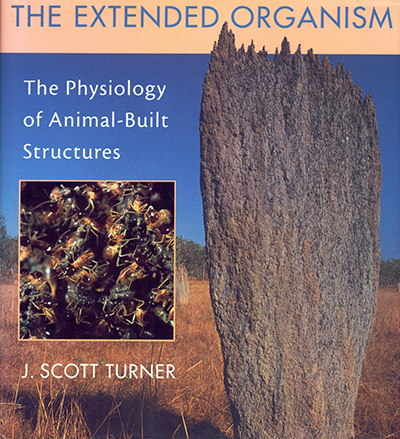
Visit my author's page at amazon.com
The Extended Organism. The Physiology of Animal-Built Structures was published in 2000 by Harvard University Press. Its thesis is that the organism, so readily perceived as an autonomous individual, is in fact "extended." This is not the same concept as Richard Dawkins' "extended phenotype." Rather, it is a physiological concept that derives from the interaction of organism with environment. This has some radical things to say about the nature of adaptation,
The Extended Organism at Amazon.com
Selected blurbs
Turner's lucid personal writing style leads the reader to the inescapable conclusion: the Earth's surface has a physiology. Manipulating midges and winter web weavers, like all life, shape and regulate the environment in accordance with the laws of nature.
Lynn Margulis, Distinguished University Professor, University of Massachusetts.
A clever dissection of environmental physiology from a persistent and clever teacher. Like most good teachers, Turner manages to slip a huge range of information into your head along the way - information that helps change your view of organisms in their world.
Stephen R Palumbi in American Scientist
Turner's tales of the subtle ways organisms capitalize on the opportunities afforded them by their physical and chemical surroundings provide more than ample rason to read the book.
Steven Vogel in Nature
Selected reviews
The apian way. New York Times Book Review, 10 December 2001, p 37. Kurt Schwenk, University of Connecticut
The Extended Organism. Perspectives in Biology and Medicine 44 (2): 297-300 Spring 2001. Kevin Laland, Oxford University
The Extended Organism. Complexity 6 (2): 58-59 2001. Carl Anderson, Universität Regensburg (Germany)
Celebrating blurry boundaries. Nature 408 (2): 404-405 23 November 2000. Steven Vogel, Duke University
Fairy circle on the gravel plains of the central Namib desert
Copyright 2016. J S Turner. All rights reserved




